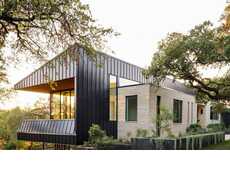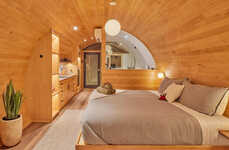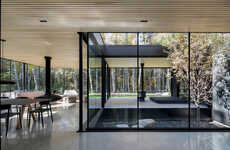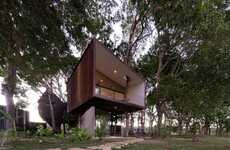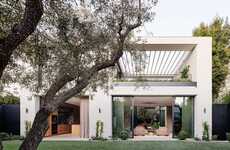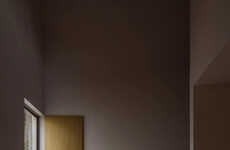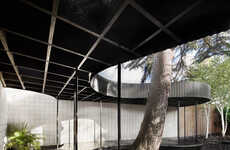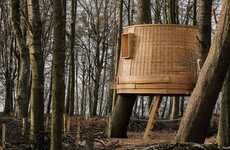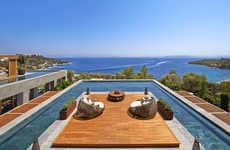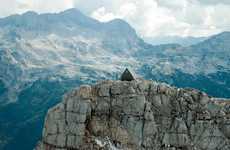
Matt Fajkus Architecture Designed This Tree House in Texas
Vasiliki Marapas — January 10, 2015 — Art & Design
References: mfarchitecture & design-milk
'The Tree House' by Matt Fajkus Architecture received its name due to the fact that it was built around an oak tree.
The architects made sure that the tree, which lies in the center of the home's backyard pavilion, is visible from every room in the house. Rather than viewing it as an impediment to their design and cutting it down, the architects transformed the oak into a focal point, both inside and outside of the residence. The tree's lush canopy also provides extra shade for the outdoor spaces.
The home's front is made up of a single two-storey structure, characterized by a floating upper level, while the back is made up of two single-storey structures placed on either side of tree, effectively enclosing the backyard. Inside the two-storey volume, the tree is visible through a wall of of differently-sized windows, which also encourage light into the hallway.
The architects made sure that the tree, which lies in the center of the home's backyard pavilion, is visible from every room in the house. Rather than viewing it as an impediment to their design and cutting it down, the architects transformed the oak into a focal point, both inside and outside of the residence. The tree's lush canopy also provides extra shade for the outdoor spaces.
The home's front is made up of a single two-storey structure, characterized by a floating upper level, while the back is made up of two single-storey structures placed on either side of tree, effectively enclosing the backyard. Inside the two-storey volume, the tree is visible through a wall of of differently-sized windows, which also encourage light into the hallway.
Trend Themes
1. Sustainable Architecture - Using existing natural elements, such as trees, in architectural designs to create unique and visually appealing structures.
2. Biophilic Design - Incorporating elements of nature, such as trees and plants, into the design of indoor and outdoor spaces to improve well-being and connection to the environment.
3. Visual Integration - Creating architectural designs that prioritize visibility and connectivity with natural elements, such as trees, to enhance the overall aesthetic and user experience.
Industry Implications
1. Architecture - Opportunities for architects to explore innovative ways of integrating existing natural elements, like trees, into their designs.
2. Construction - Demand for skilled construction professionals to execute the complex integration of natural elements, such as trees, into architectural structures.
3. Landscaping - Growing need for landscaping services that specialize in the preservation and enhancement of existing trees within architectural designs.
5.5
Score
Popularity
Activity
Freshness

